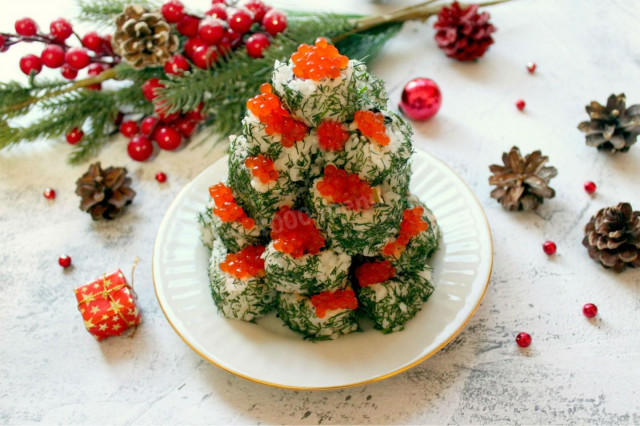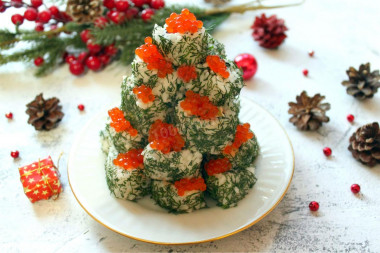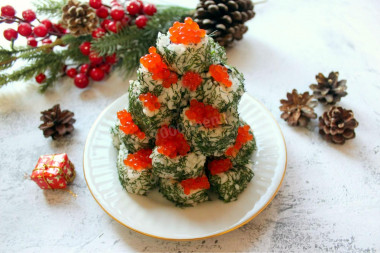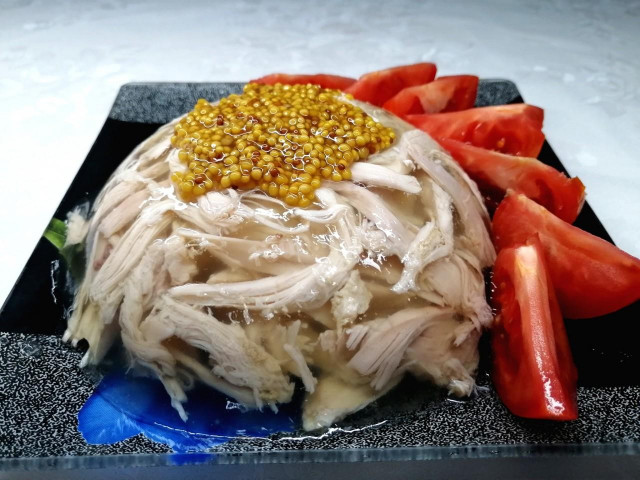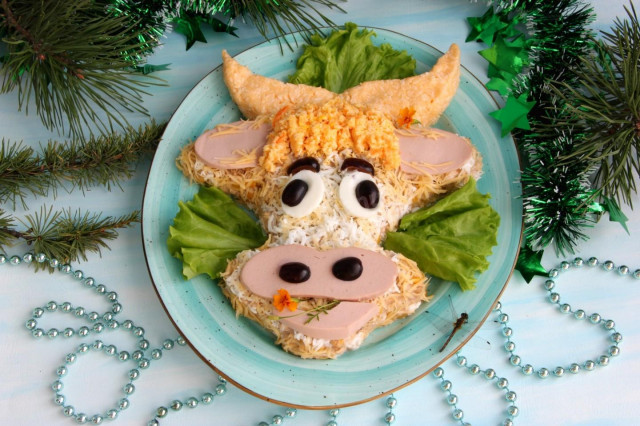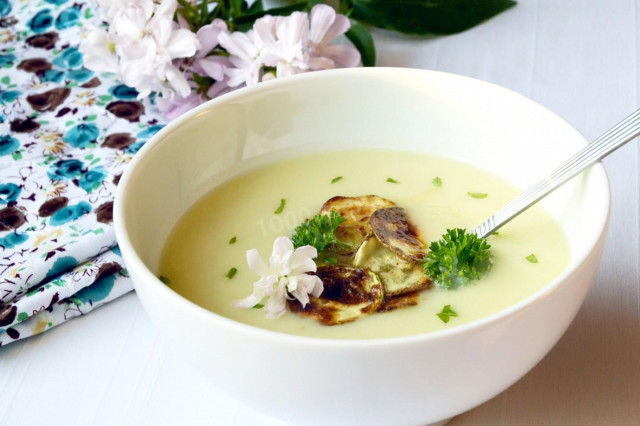Composition / ingredients
Step-by-step cooking
Step 1:
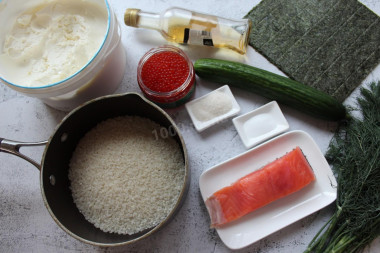
Prepare all the ingredients and equipment for making rolls. You will need a mat and a food wrap. Rice must be purchased Japanese, round-grain or special rice for sushi. Long-grain and steamed rice are categorically not suitable, because due to the low starch content in the grains, such rice does not have the necessary gluten, and the cooked dish will simply crumble. For refueling, it is necessary to use rice vinegar.
Step 2:
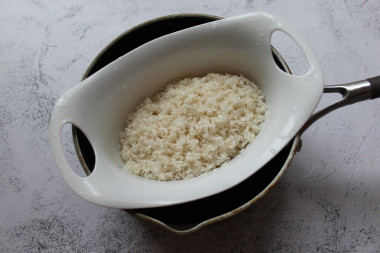
Pour the rice into a bowl, pour cold running water and, in order not to damage the grains, rinse the rice with careful movements, drain the muddy water and pour clean cold running water again. Rice should be washed at least 4 times, the water should become clean and transparent. Discard the washed rice in a colander and leave it for 10 minutes, during which time all the excess liquid will drain.
Step 3:
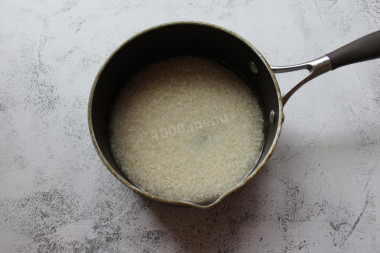
Pour the rice into a saucepan and fill with water, put on fire. It is very important to observe the ratio of rice and water. It should be 1:1. When the water boils, cover the pan with a transparent lid, reduce the heat to low and cook for 15 minutes. During this time, the moisture should completely evaporate. The lid cannot be opened during cooking, therefore, in order to see the cooking process, it is better to use a transparent lid.
Step 4:
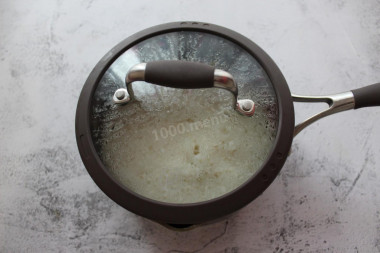
After the specified time, remove the pan with rice from the heat and leave the rice to steam under the closed lid for another 10 minutes. Do not open the lid, the rice should be fully cooked.
Step 5:
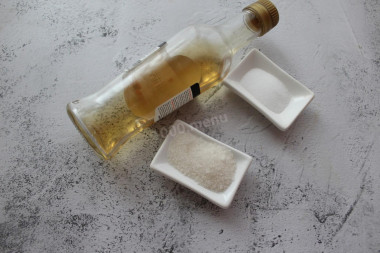
At this time, prepare the dressing. Pour rice vinegar into a small ladle (turku), add sugar and salt. Put the ladle on a slow fire and, stirring, dissolve the loose ingredients. As soon as the sugar and salt have dissolved, immediately remove the dressing from the heat. The dressing should never boil, so you can not cook it over high heat.
Step 6:
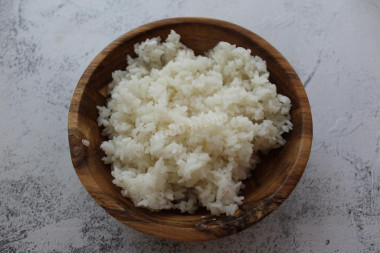
Put the finished rice in a wooden bowl, wiped with a damp towel, so the rice will not stick to the dishes. It is better to use a special tub of hangiri made of cypress, but I don't have one, so I used the one that was. Wooden dishes are used to prevent any interaction with rice vinegar, and also wooden dishes absorb excess moisture of rice when it is stirred.
Step 7:
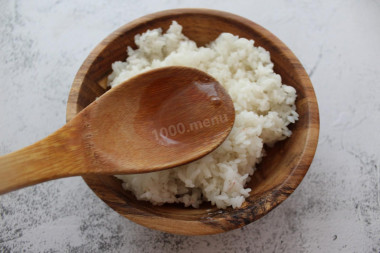
Take a wooden spatula and place it over the rice. Pour the vinegar dressing on the spatula, and it will gently spread over the rice. Break the rice with smooth movements, mix it carefully, trying not to damage the rice grains. Cover with a damp, clean towel and let the rice cool. When the rice cools down, you can start forming sushi and rolls.
Step 8:
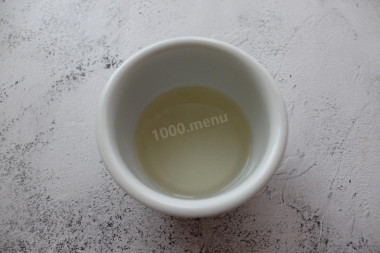
Prepare water for wetting your hands. In a small container, pour the rice bite and water in a ratio of 1:3. Wetting your hands in such a solution, it will be easier to work with rice with your hands. It is better to use filtered water, as it directly enters the consumer product without further heat treatment.
Step 9:
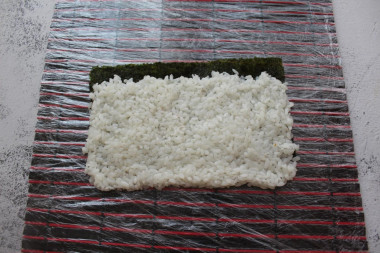
Prepare the mat. It must be wrapped several times with cling film. Cut the nori sheets in half. On the prepared mat, put the first half of the nori leaf with the glossy side down. Moisten your hands in the solution, take 120 grams of boiled rice and level it along the nori, leaving 1 cm free from above without rice, and from below we go out by 1 cm for the redistribution of the nori.
Step 10:
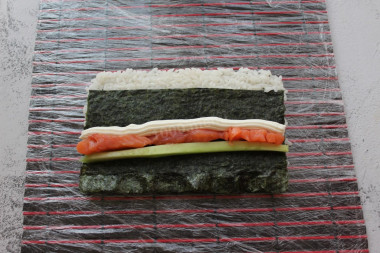
Now turn the nori over so that the rice ends up on the mat. At the same time, arrange the nori so that 1 cm of rice free of nori remains on top. Place the filling in the center of the nori leaf: first squeeze out the curd cream cheese through a pastry bag, put the bars of red fish and fresh cucumber next to it.
Step 11:
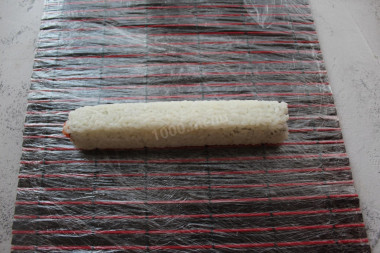
Holding the filling, start gently using the mat to roll up the roll. When the roll is formed, give the roll a round or square shape by pressing it on all sides with a mat.
Step 12:
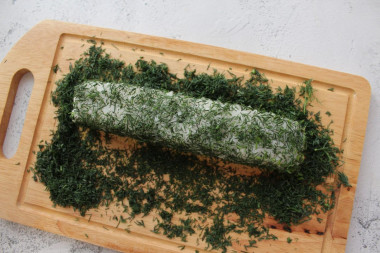
Finely chop the pre-washed and dried greens. Roll the finished roll in chopped dill, and then transfer to a wooden board and, wetting the knife in the solution, first cut the edges, then cut the roll in half. Connect the two halves of the roll and cut in half again. And cut each half again. You should get 8 rolls. The knife must be wetted, so the rice will not stick to the knife, and will not lead to deformation of the rolls.
Step 13:
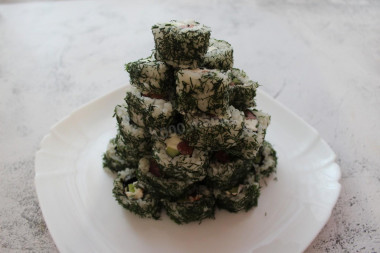
Do this with the remaining ingredients. The base of the Christmas tree will be formed from the finished rolls. On the base, lay out the next row of rolls, laying them a little deeper. And so on until the very top.
Step 14:
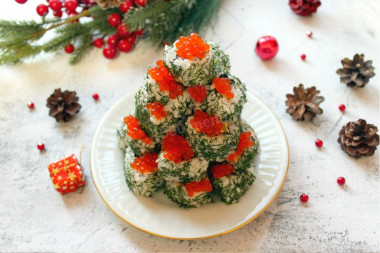
To complete the Christmas tree, it remains only to put red caviar on the rolls with a teaspoon. The Christmas tree is ready!
Try to cut the rolls as equally as possible, they must be the same width, otherwise your Christmas tree will be unstable. It is very important that the height of the rolls is the same. My first Christmas tree tilted, and after 10 minutes it fell apart. I had to reassemble the Christmas tree, selecting more even rolls.
For cooking, it is better to use filtered or bottled water that is neutral to taste. If you use tap water, keep in mind that it can give the dish an unpleasant characteristic taste.
The skin, if it is not rough, not damaged and not bitter, can not be cut off.
Caloric content of the products possible in the composition of the dish
- Fresh cucumbers - 15 kcal/100g
- Dill greens - 38 kcal/100g
- Steamed salmon - 197 kcal/100g
- Boiled salmon - 189 kcal/100g
- Fresh salmon - 140 kcal/100g
- Granulated sugar - 398 kcal/100g
- Sugar - 398 kcal/100g
- Pink salmon caviar grainy - 230 kcal/100g
- Salmon caviar grainy - 245 kcal/100g
- Nori - 3 kcal/100g
- Salt - 0 kcal/100g
- Water - 0 kcal/100g
- Rice vinegar - 20 kcal/100g
- Cottage cheese - 223 kcal/100g
- Round rice - 330 kcal/100g

